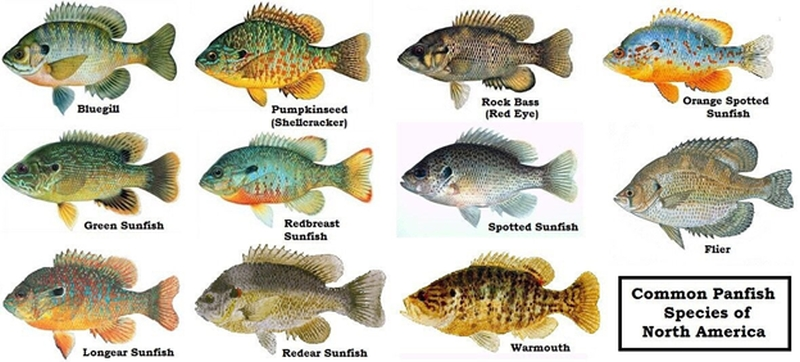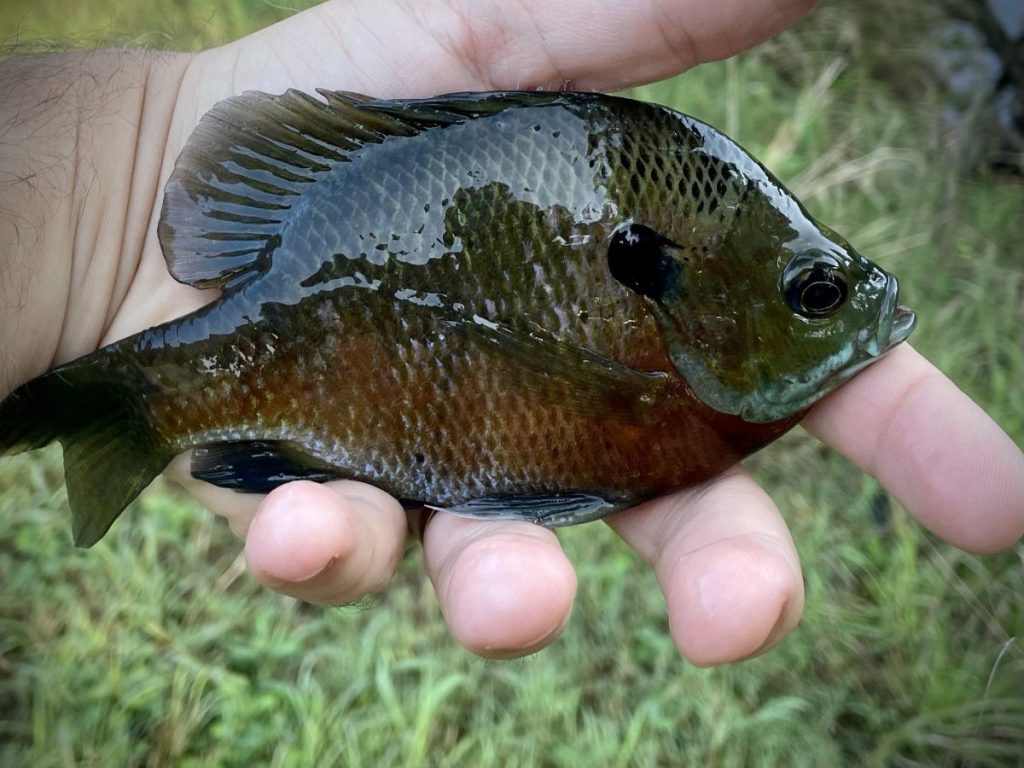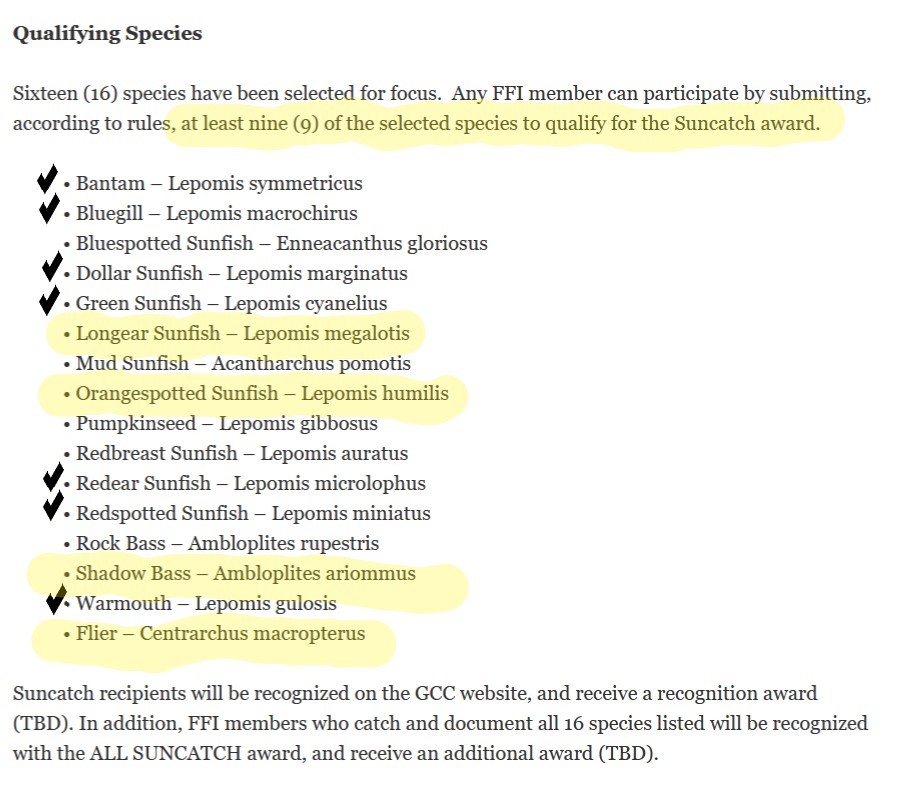High Stick Nymphing for Panfish
With July giving way to August, torrential rains have given way to summer heat. And while conditions are still less than ideal, the fish are there and becoming more accessible as waters return to normal levels. Still motivation is hard to come by in the energy sapping heat of the southern summer. And, as a result, I’ve hardly seen the water since checking off my first White Bass in late June. Given the heat, I had largely resigned myself to a life of tying in the comfort of my air-conditioned home.
The itch to spend some time in the field always returns though, and a few unseasonably cool mornings (briefly under 80 F) had me once again weighing my options.
High Sticking Close to Home
Itch to fish or not, I accepted the summer heat would be a limiting factor in my decisions. As much as I’d enjoy a day of chasing reds in the marsh, I knew it simply wasn’t in the cards. The 2:00AM alarm necessary to be on the water by 5:00AM and off by 9:00AM just wasn’t worth it. Nor was the gas or five-hour round trip drive.
Instead, I elected to stay close to home. Sunfish would no doubt be eager to take a fly, and my Echo Shadow II 10′ 2wt was long overdue for a test drive. Better still, a concentrated effort could help me close the gap in RSFF’s Jambalaya challenge as I now sat half a dozen species behind the leader. Add in my need to still report a number of common Lepomis for the FFI Gulf Coast Council’s Suncatch Challenge, and I had no shortage of motivation to try my hand at some smaller, oft ignored species.
Reviewing my notes, Bluegill (still unreported for the Suncatch Challenge) and Dollar Sunfish (a prospective lifer) became my primary targets. Knowing both were easily accessible among the roadside cypress knees a mere exit away, I planned to start there. Then, assuming things went well, continue my way down the Lepomis species list.
Day 1
Armed with a box of Cap Spiders, Rubber Legged Dragons, and an assortment of smaller offering (#20-24), I made my way to a roadside stand of Cypress Knees shortly after 8:00AM. The rod, sensitive enough that I could feel a dragon fly landing on it, was rigged with 25+’ of mono tapering to a 5x tippet. A heavier anchor fly at the end and a light dropper above, I’d systematically prospect between the trees in hopes of locating my targets.
Concentrating on the shallows, I quickly picked up a Redspotted sunfish, small Redear and my first Bluegill of the day. The bite was fairly slow however, and, after losing my only Dollar sunfish of the morning, I swapped flies and decided to go in search of deeper waters.
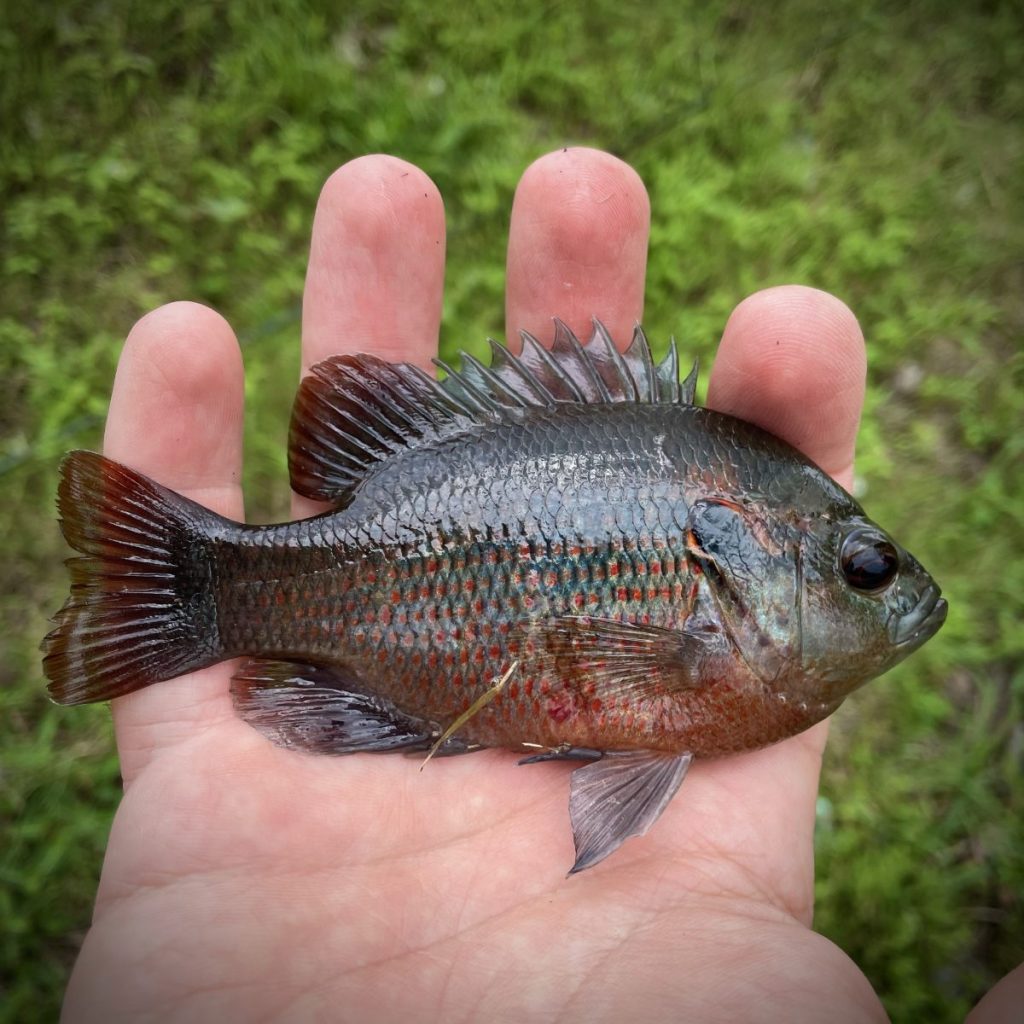
Trading the tight quarters of the cypress trees for a stretch of deeper water lined with emergent vegetation, I removed the entire length of leader from my rod and began working the bottom with an olive cap spider.
The bite quickly heated up from there and a string of Warmouth and Bluegill graced the end of my line in the half hour that followed. No dollar sunfish entered the mix, however, and I soon called it a day as increasing winds announced an approaching storm.
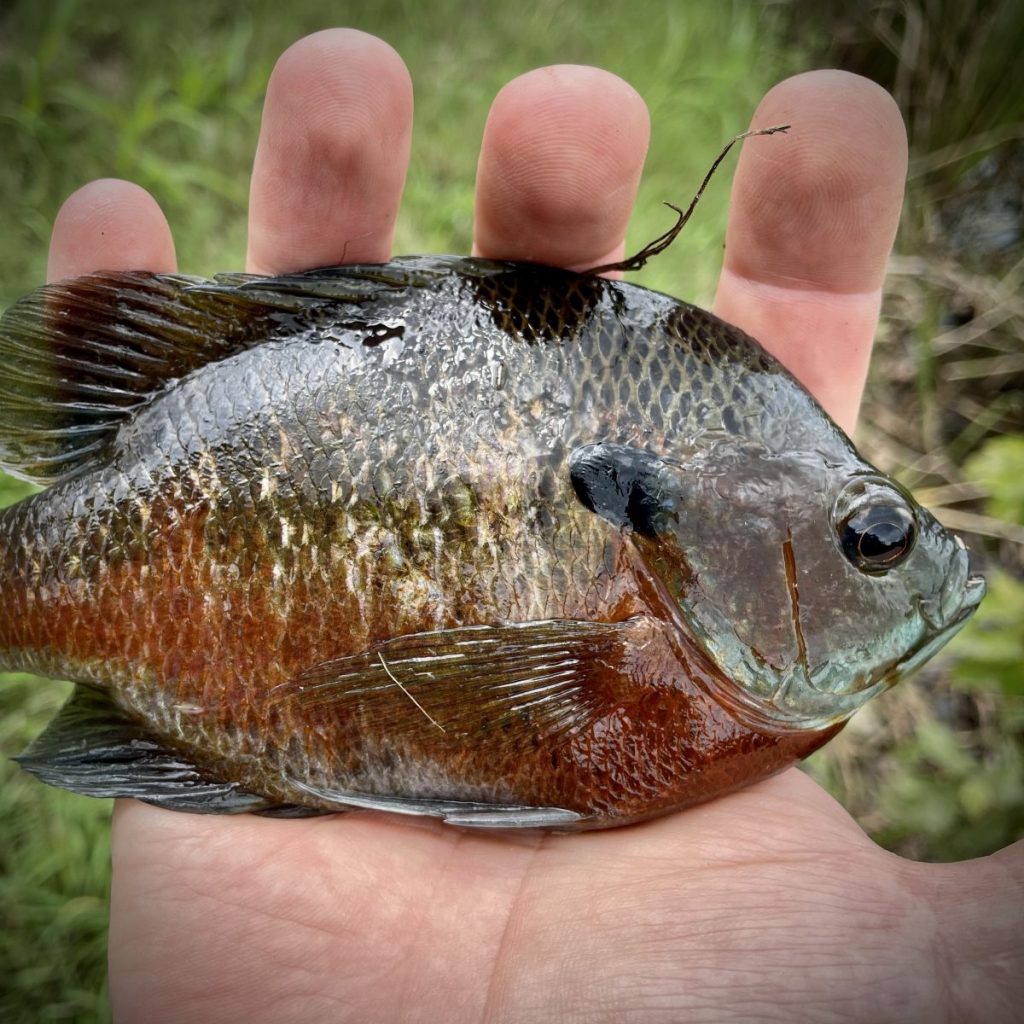
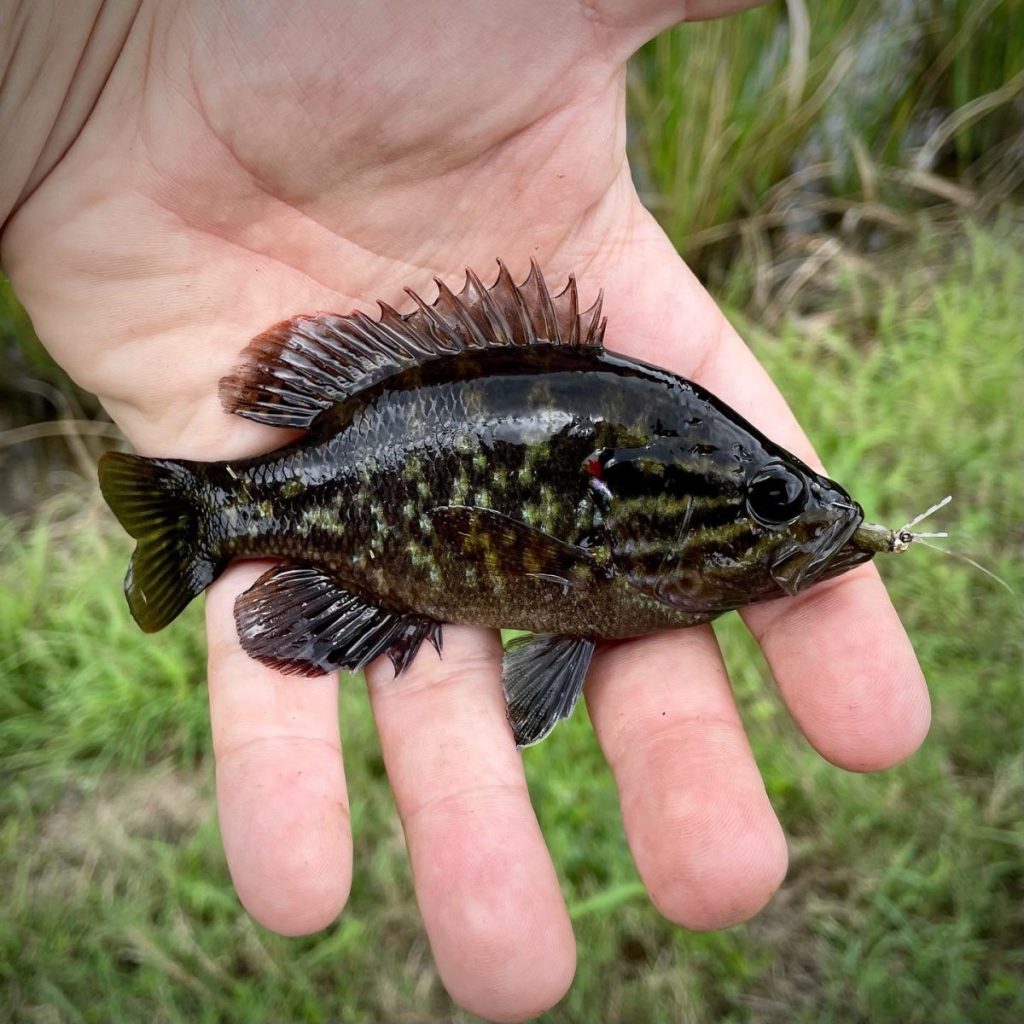

Day 2: Going Small
With Bluegill checked off my to-do list, my attention was now fixed on finally landing the elusive Dollar Sunfish. Common throughout the area, it was simply going to be a matter of going small enough. Expanding my selection of size 20-24 offerings, I settled on fishing the stretch of water last covered in my Roadside Ditches post. Shallow, weedy and clear, this stretch of water was home to a variety of Lepomis species including my target.
Again on the water around 8 AM, I began to work the scattered “deep” holes accessible within the otherwise heavily vegetated waterway. Rigged with a single beadhead nymph (#24), I began methodically covering each opening. Flipping my nymph to the far edge, I would allow it to settle to the substrate before swinging the fly slowly across the opening.
The fish that followed were surprisingly large given the size of my offering. Yet each light tap raised my hopes just slightly before hope gave way to the next in a long line of Bluegill, Redspotted and Redear Sunfish that followed.
Eventually, however, I turned my attention to the weedy shallows nearer my feet, and my luck changed. There in less than 6″ of water, I began to catch glimpses of my target as they darted among the weeds.
Adjusting my tactics, I quickly managed to sight fish a small female. And just like that, the Dollar Sunfish was checked off my life list.
Intent on adding a more brightly colored male, I continued to work the shallows, but to my surprise the only other fish landed was a small Golden Topminnow (A lifer in its own right, though not one I ever intended to target).
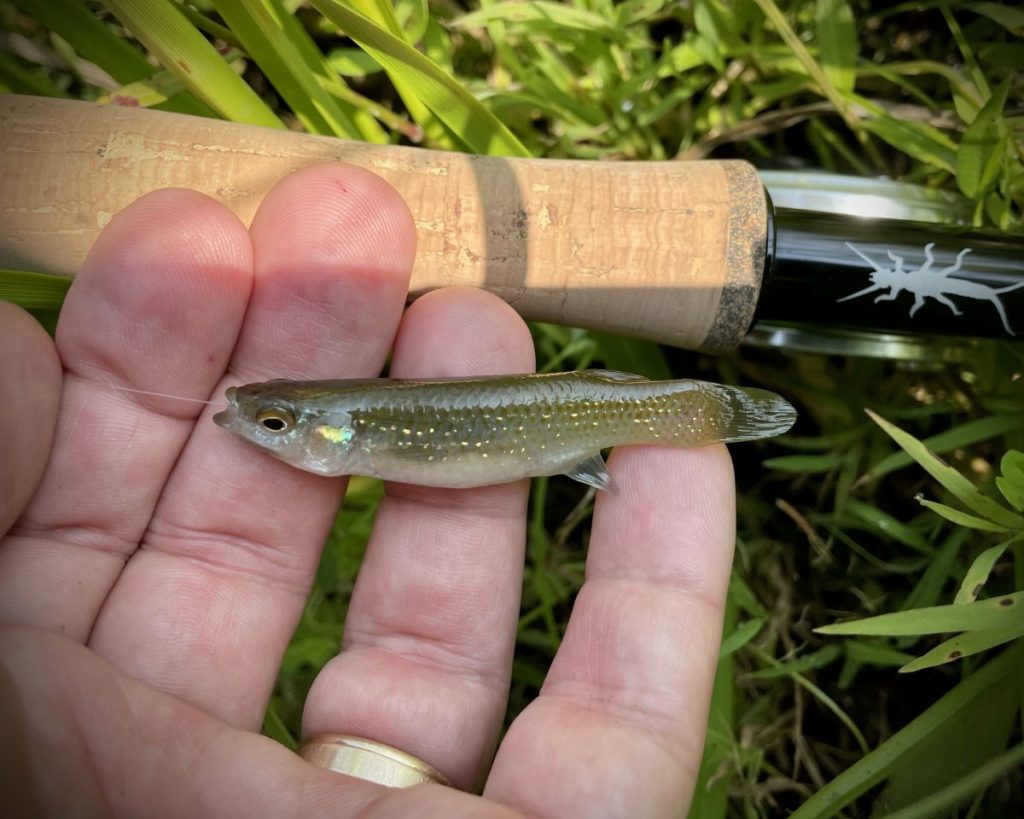
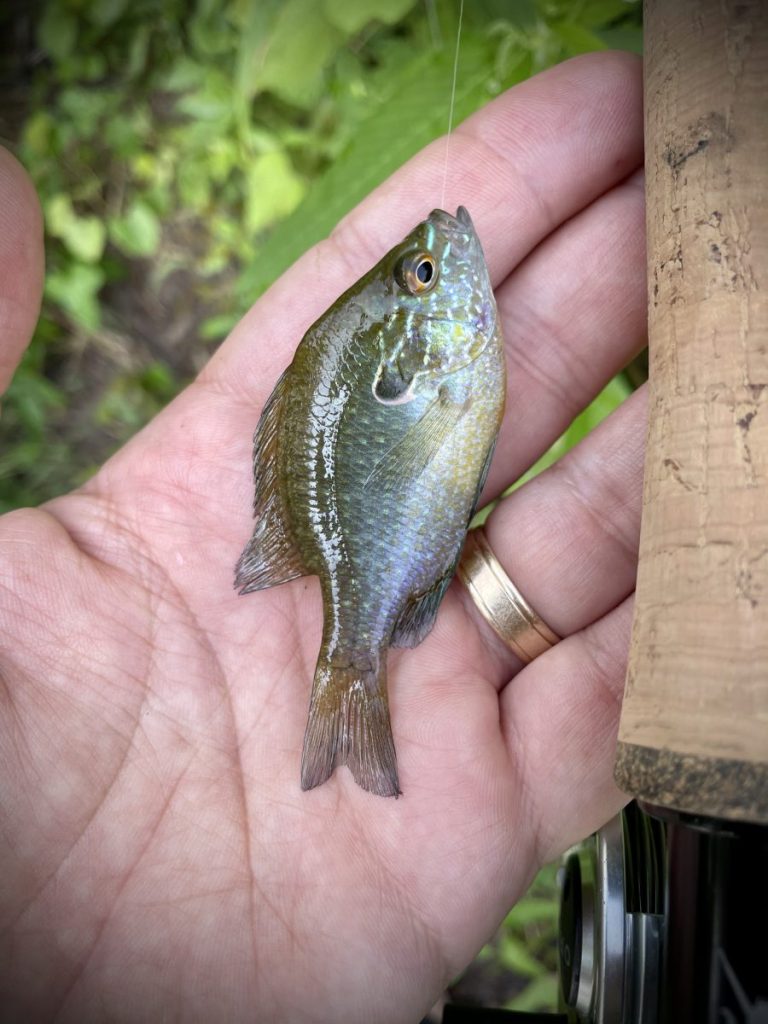

Once again working my way deeper, I held my fly tight to the vegetation as I now concentrated my efforts on the edges of each opening. On queue, the Bluegill quickly began to make repeat appearances as did my first Warmouth of the day.
The fish that followed was different, however. A small, roundish Lepomis, it darted from the submergent vegetation to break the bluegill monotony. Darkly barred and with a mouth too large for a juvenile bluegill or redear, it was clearly something new. Perhaps the diminutive Bantam (Lepomis symmetricus) known to inhabit the adjacent swamp.
Unsure of the ID, I snapped a quick photo and sent the small fish on its way. In retrospect, this may have been a mistake, but Dollar Sunfish were my target. And I was intent on landing a male before the heat forced me back to the comfort of my air conditioned home.
When that brighter male Dollar came to hand about an hour later, I snapped a quick pic and called it a day.
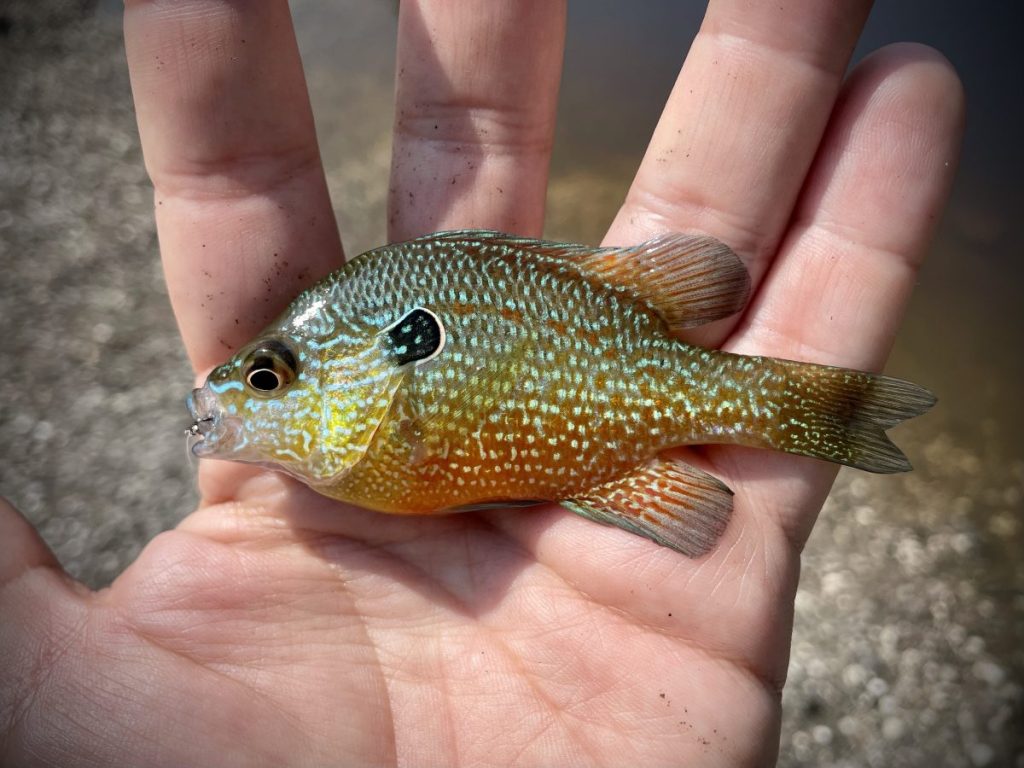

Back at home, I began to sort through my photos and was once again drawn to the possible Bantam. Though it didn’t seem quite right, it was the best guess I could offer.
Deciding it best to defer to the experts, I began forwarding the image to those who may be able to offer insight and spent the next few hours reviewing koaw.org’s sunfish ID pages.
A Lifer Away from the Suncatch
As responses began to roll in, it became apparent that my unknown catch was likely a Bantam or, perhaps, a Bantam-hybrid of some variety. With hybrids still qualifying for the Suncatch contest, I now found myself with seven of the nine species required to complete the challenge. And with the locally abundant Longear Sunfish still remaining on my list, I was effectively one species away.
Reviewing the eligible species list, three local options quickly emerged: the Orangespotted Sunfish, Shadow Bass & Flier.
Of these, only the Orangespotted seemed reasonably attainable as multiple anglers had registered catches in a nearby urban lake earlier this spring.
A new target in mind, I again replenished my supply of smaller nymphs and prepped for one more morning of Sunfish.
Day 3: Suncatch or Bust
Rigged and ready, I left the house by seven the following Tuesday and was on the water by 7:30AM.
Unsure of exactly where to start, I began to prospect the water directly down slope from the parking lot. Moving east along the shore, I worked my way shallow to deep. Targeting weedlines, tree branches and any other structure I could identify along the way.
The fishing that followed was fairly fast paced as a string of small panfish came to hand in short order. And while most were aggressive Green Sunfish, an assortment of Bluegill, Redear and brightly colored Longear Sunfish also made their presence known. The latter serving as species eight on my Suncatch checklist.

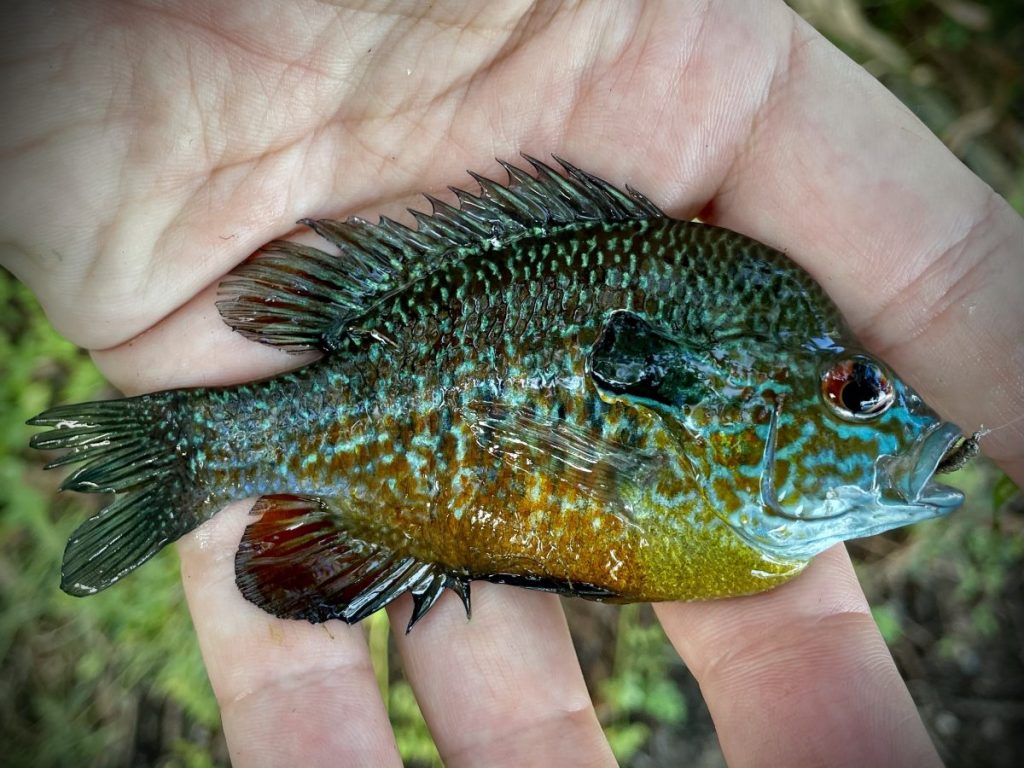
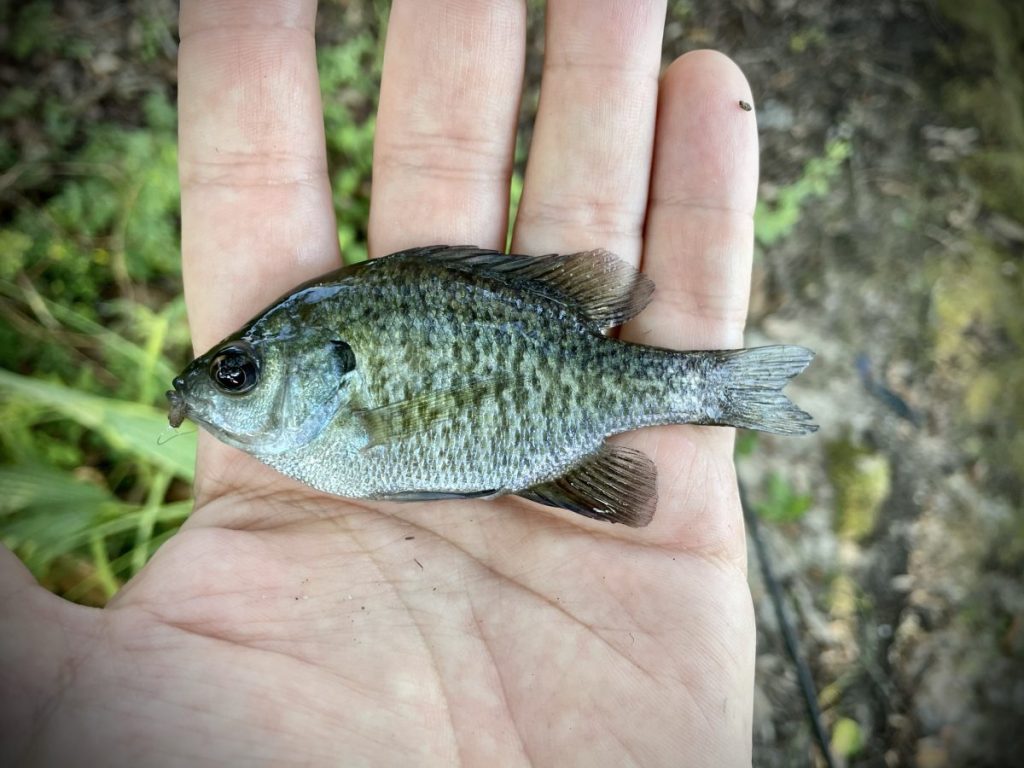

By 9AM, I was 30+ fish into my morning, but had yet to check off my primary target. Temperatures quickly rising, I began to wonder if completion of the Suncatch would have to wait for another day. The other species were simply so aggressive that I was unsure just how many I would have to sort through before lucking into my first Orangespotted.
The day was still young though, & I quickly received motivation in the form of small dead fish floating along the shore.
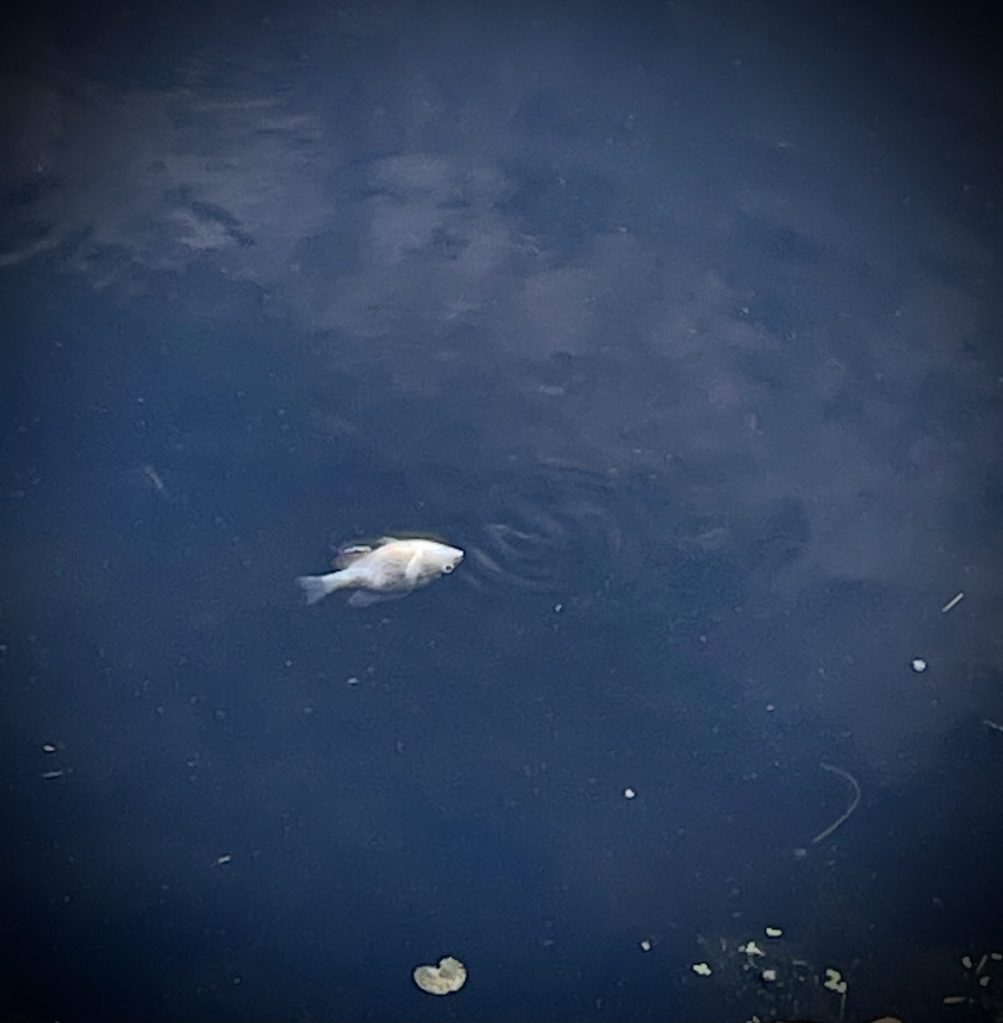
Clearly different from the species encountered thus far, I worked the fish ashore with my rod tip and knelt down to examine it.
Sure enough, the body was that of an Orangespotted Sunfish (presumably female based on coloration). Though disappointing to find dead, it proved I was on the right track and provided the necessary motivation to keep pushing until I had landed my target.

Working my way along the bank, I came upon a stretch of water where the vegetation formed a protected cove perhaps 6′ across. Casting to the far weedline, I allowed the fly to descend to the substrate before slowly swinging the line back towards shore. And as had happened all morning, strikes followed.
Primarily Green Sunfish, these fish were often so small that the long rod would launch them from the water on the hook set. And more than once, I found myself reaching out to catch the small fish as their momentum rocketed them past where I stood.
On perhaps the tenth or eleventh hook set that followed, the small fish that launched from the water was different. Slightly rounder and more blue-green than green, my excitement quickly skyrocketed as I realized what was on my line. I had finally had my Orangespotted!!

Tiny blue-green gem in hand, I snapped a quick picture and sent the small Lepomid on its way. Nine Lepomis down, and I was ready to call it a day shortly after 10 AM!
Nothing Left to Do, but Wait (and Fish!)
With my Longear and Orangespotted submitted, all that remains is the wait. Checking off nine Lepomis was not something I had set out to do when the prior week began. Yet seven days later, here I was. I had tentatively completed the Suncatch Challenge and checked off a number of lifers in the process. And while none of my new catches had qualified for the KFF Mixed Bag, I had managed to add five species to my Jambalaya Challenge list.
Back within one species of the Jambalaya Challenge leader, all that is left is to keep fishing while I wait to hear from Suncatch…

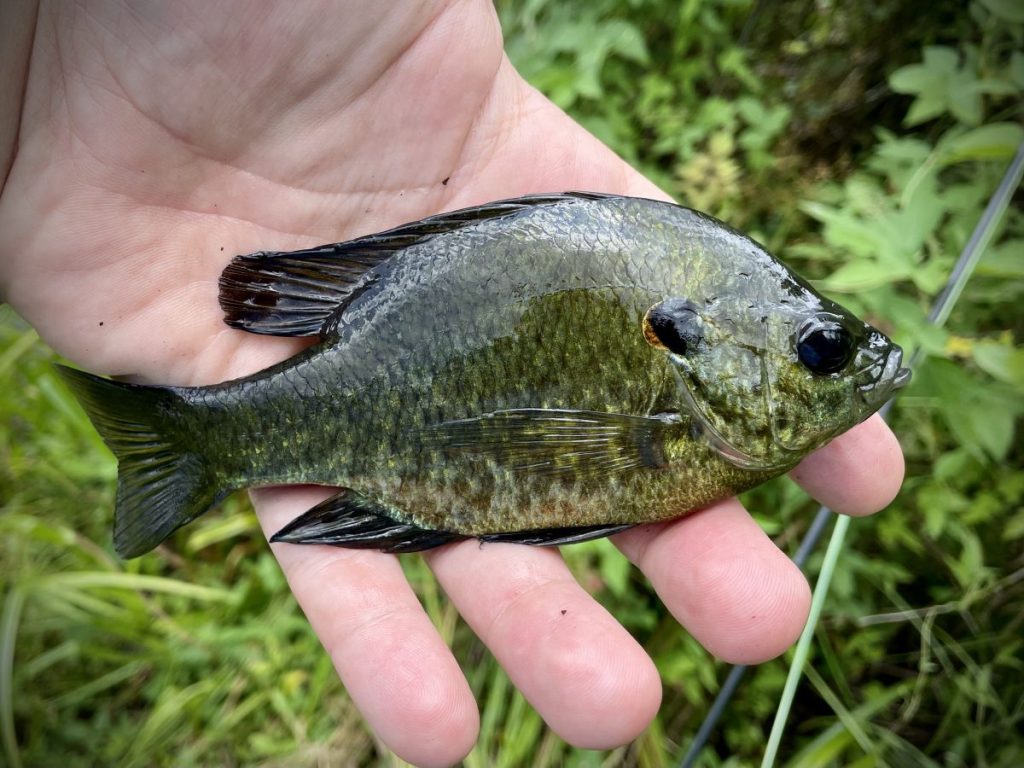
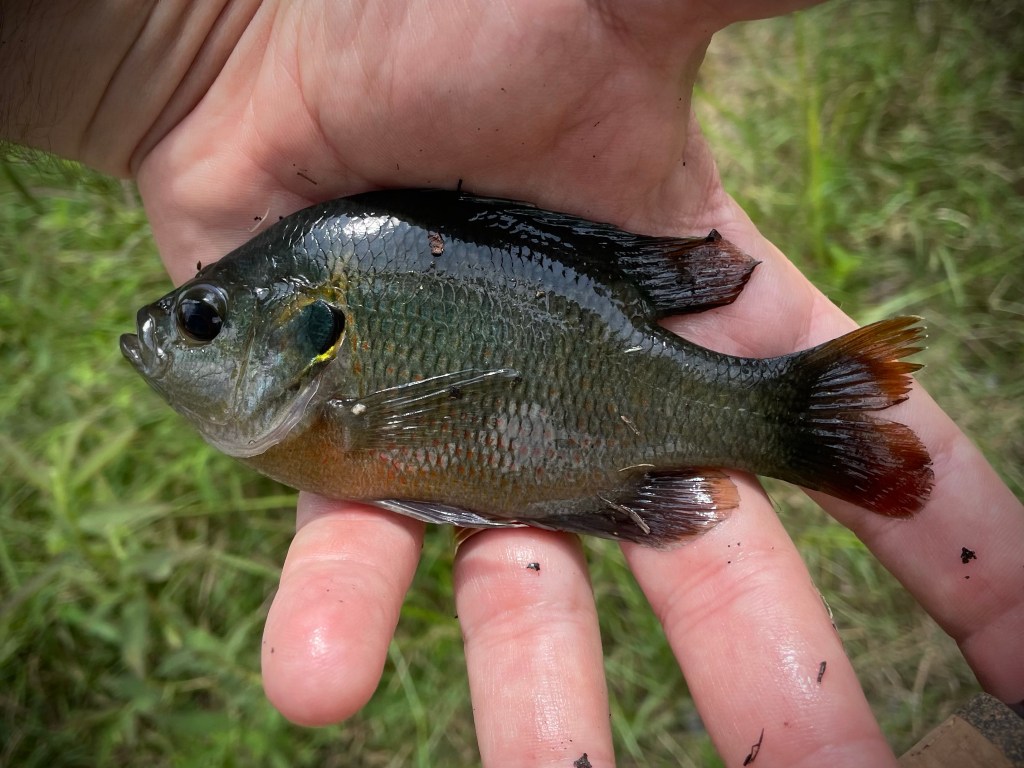






Tight Lines
Chris

